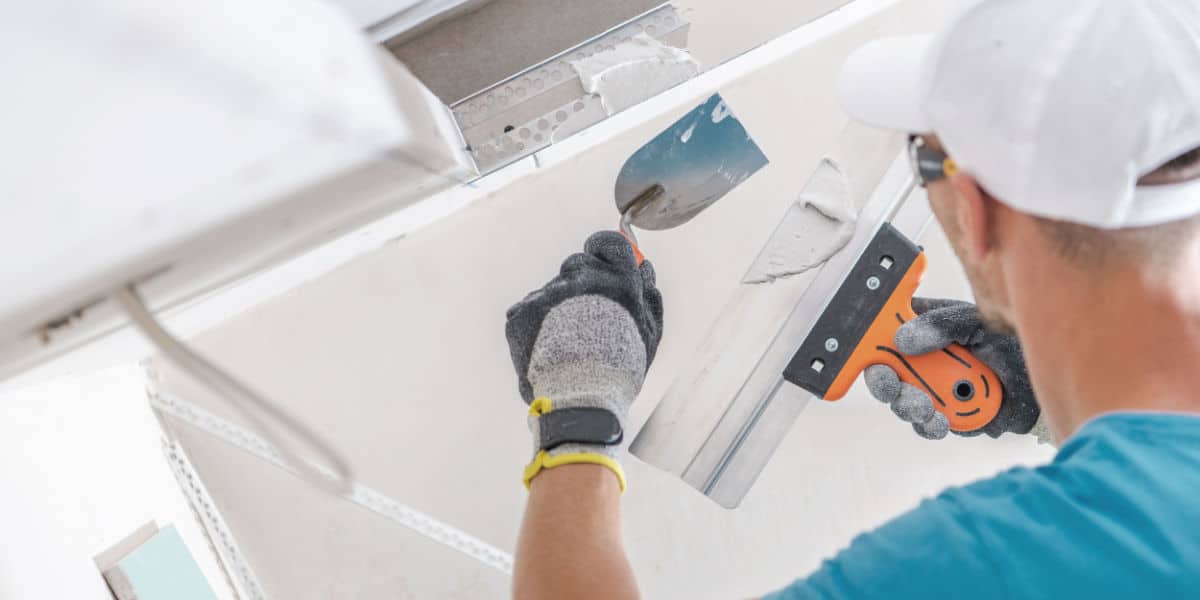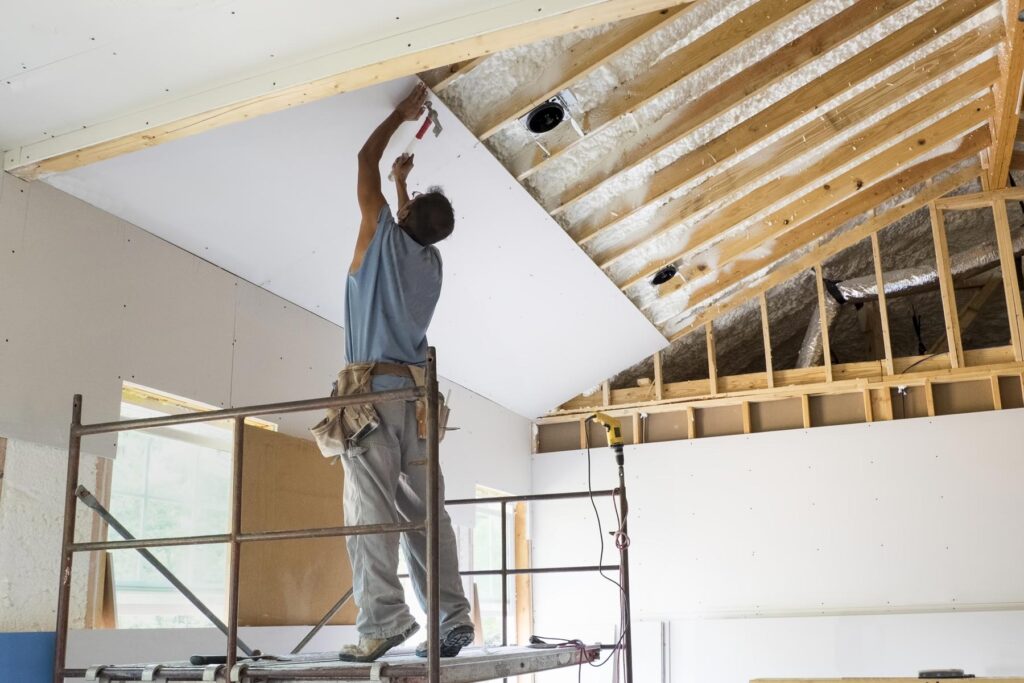Trusted Drywall Fort Worth Specialists for Seamless Outcomes
Trusted Drywall Fort Worth Specialists for Seamless Outcomes
Blog Article
Drywall Setup Made Easy: Tips for Perfect Results
Drywall installment is usually regarded as an overwhelming job, yet with the best approach and knowledge, it can become a workable endeavor. Selecting top quality products and preparing the setup area are important very first steps that establish the structure for success. Mastering strategies for reducing, hanging, and finishing drywall can substantially impact the end result. As we check out these important tips, you might find that even the tiniest modifications in your approach can bring about incredibly boosted results, leaving you to consider how these methods can transform your following project.
Selecting the Right Products
Selecting the suitable products for drywall installation is vital to achieving a long lasting and cosmetically pleasing finish. drywall installation. The primary component, drywall sheets, normally come in different densities, with 1/2-inch sheets being typical for interior walls. For areas calling for added dampness resistance, such as restrooms or kitchen areas, take into consideration using green board or cement board, which are specifically created to hold up against moisture

In addition, picking the appropriate bolts-- either nails or screws-- is necessary for securing the drywall to the framing. Drywall screws are generally preferred for their holding power and lowered threat of standing out. Finally, consider the complements such as primer and paint, which not only boost the look however likewise protect the drywall from moisture and wear.
Preparing the Setup Area
Prior to starting the drywall setup procedure, it is important to prepare the installation location completely. This preparation entails a number of crucial actions to make sure a successful and smooth job. First, clear the area of any type of furnishings, appliances, or obstructions that can impede access. A tidy work area decreases the danger of damages to existing items and permits for efficient motion during setup.
Next, evaluate the walls and ceiling for any kind of imperfections, such as cracks, holes, or mold and mildew. Address these issues in advance; spot any type of problems and enable sufficient time for repair work to completely dry. Additionally, guarantee that electric outlets, switches, and pipes are effectively positioned and represented, as this will certainly influence drywall positioning.
Think about the ecological problems too. A steady temperature level and moisture degree are crucial for ideal bond and efficiency of the drywall materials. If needed, utilize a dehumidifier or heating unit to produce appropriate conditions.
Trimming and Hanging Drywall
The trick to effective drywall setup depends on the accurate cutting and hanging of the panels. Begin by gauging the area properly, taking into consideration any type of obstructions such as electric outlets or home windows. Utilize a straight edge and an energy blade to score the drywall along your measurements, after that article break it along the scored line for a tidy break. For even more complex cuts, such as around electrical outlets, a drywall saw can be made use of for accuracy.

Always function from the top down and left to right, making sure that you maintain a staggered pattern to improve stability. Appropriately hanging the drywall establishes the foundation for a smooth surface, inevitably resulting in premium results in your drywall job.
Insulation and Mudding Techniques
While appropriate cutting and dangling of drywall establishes the stage, the next critical step includes grasping taping and mudding strategies to ensure a seamless surface. Insulation is essential for strengthening joints and stopping splits; it involves installing tape into the applied joint compound (mud) Beginning with a high quality fiberglass or paper tape, using the tape over the joint and pushing it right into the wet mud using a taping blade, making certain no air bubbles continue to be.
Once the tape is in place, apply a thin layer of joint compound over the tape, feathering the edges to produce a smooth change to the drywall surface area. Permit this layer to completely dry entirely prior to sanding it gently to get rid of imperfections. Repeat this procedure, using added layers of mud as essential-- typically two to three coats-- while gradually widening the application location with each layer to achieve a seamless appearance.
After the final layer dries out, sand the surface area with a fine-grit sandpaper till smooth. drywall contractor. Keep in mind to put on a mask during sanding to prevent inhaling dirt particles. Understanding these taping and mudding strategies is critical for achieving a professional-quality coating in your drywall installment
Completing Touches for Perfection
Achieving a flawless drywall installment surpasses taping and mudding; it finishes in the completing touches that raise the overall look. These last steps are essential in guaranteeing a professional-grade coating that boosts the appearances of your area.
Begin by sanding the dried joint substance to produce a smooth surface. Make use of a fine-grit sandpaper and a fining sand block or pole sander for optimum control. Pay specific you can try this out attention to sides and corners, as these areas often tend to require even more careful work. After fining sand, wipe down the wall surfaces with a moist towel to eliminate any dust particles, making certain a clean surface area for painting.
Next, use a primer particularly designed for drywall. This step is essential, as it assists secure the joint compound and offers a consistent base for the topcoat. When the guide dries, examine for any kind of imperfections, and retouch as needed.
Final Thought
In conclusion, successful drywall setup hinges on the careful choice of products, comprehensive prep work of the installation area, and accurate execution of cutting and hanging methods. Mastery of taping and mudding processes is necessary for achieving a smooth coating.
Drywall installation is typically viewed as a complicated job, yet with the ideal technique and understanding, it can become a workable endeavor.Selecting the appropriate products for drywall installment is critical to attaining a sturdy and visually pleasing finish.Before starting the drywall installment process, it is vital to prepare the installation location extensively. Grasping these taping and mudding techniques is crucial for attaining a professional-quality surface in your drywall installation.
In conclusion, successful drywall installment hinges on the careful option of products, extensive preparation of the installation location, and accurate implementation of reducing and hanging techniques.
Report this page